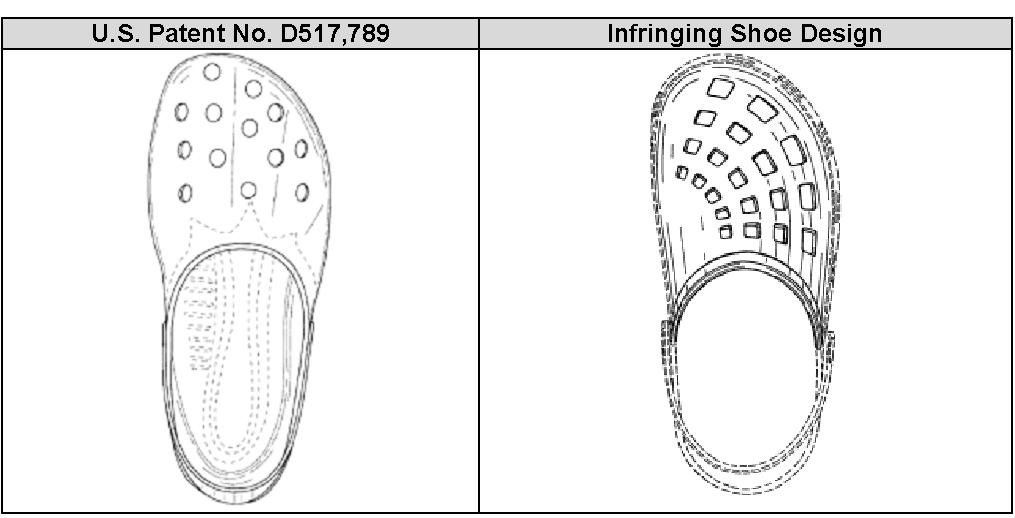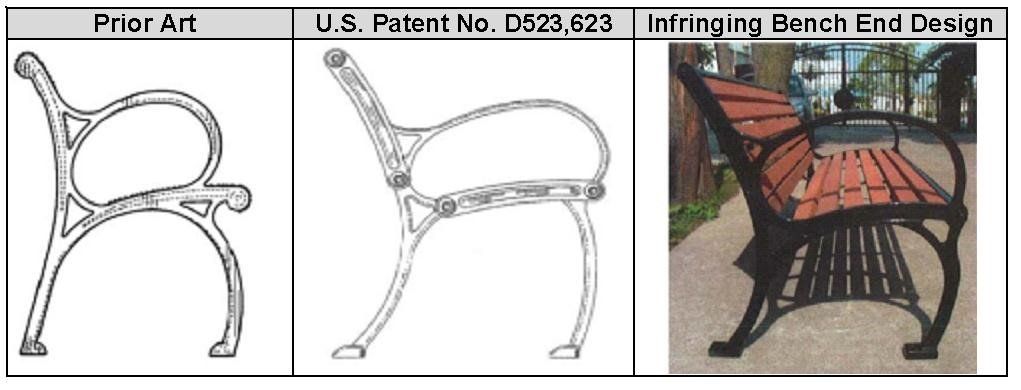Examples of Design Patent Infringement

Given the prior art it can often be difficult to tell if a viable claim for design patent infringement can be maintained against manufacturers of similar products.
Test For Design Patent Infringement
The primary test for determining infringement of a design patent was established in the seminal design patent infringement case, Gorham Co. v. White, 81 U.S. 511 (1871). In Gorham, the United States Supreme Court declared that infringement of a design patent occurs if: “in the eye of an ordinary observer, giving such attention as a purchaser usually gives, two designs are substantially the same.” In 2008, a Federal Circuit court held that the “ordinary observer test,” as established in Gorham, is the sole test for determining design patent infringement; however, the determination must be “conducted in light of the prior art.” If a design patent is substantially similar to prior art, then the differences between the design patent and the potentially-infringing products will be accentuated. Therefore, the appropriate test for design patent infringement is whether an ordinary observer would consider two designs substantially the same, considering the prior art.
Design patent infringement is highly contingent on prior art. Therefore, the relevant prior art must be considered when analyzing the viability of claims against potential infringers. 35 U.S.C. §102(b) identifies that prior art may consist of an invention that “was patented or described in a printed publication in this or a foreign country or in public use or on sale in this country, more than one year prior to the date of application for patent in the United States.”
Examples of Design Patent Infringement
Although design patent infringement is determined on a case-by-case basis, examples of prior decisions may be used as a guideline to predict potential outcomes of future design patent infringement cases. The following examples used the “ordinary observer” test to determine that a design patent had been infringed.
The Federal Circuit court in a Crocs case entered a judgment of infringement against ITC noting that a “side-by-side comparisons of the…products suggest that an ordinary observer, familiar with the prior art designs, would be deceived into believing the accused products are the same as the patented design” Specifically, the Federal Circuit court explained that “minor differences between a patented design and an accused article’s design cannot, and shall not, prevent a finding of infringement.” The figure below displays a side-by-side comparison of the two products at issue in the case.


Have an idea for a blog? Click and request a blog and we will let you know when we post it!













